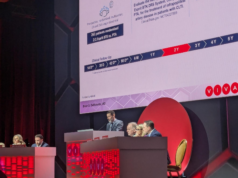 Five-year results from a Japanese post-market surveillance study aimed at evaluating the Zilver PTX drug-eluting stent (DES) in a real-world population show consistently positive outcomes. The findings were presented for the first time at the Cardiovascular and Interventional Radiological Society of Europe 2018 meeting (CIRSE; 22–25 September, Lisbon, Portugal), by Kimihiko Kichikawa, Nara Medical University Hospital, Kashihara, Japan.
Five-year results from a Japanese post-market surveillance study aimed at evaluating the Zilver PTX drug-eluting stent (DES) in a real-world population show consistently positive outcomes. The findings were presented for the first time at the Cardiovascular and Interventional Radiological Society of Europe 2018 meeting (CIRSE; 22–25 September, Lisbon, Portugal), by Kimihiko Kichikawa, Nara Medical University Hospital, Kashihara, Japan.
According to Kichikawa, the use of the Zilver PTX DES (Cook Medical) in treating patients with femoropopliteal lesions have so far elicited favourable outcomes. Therefore, Kichikawa and colleagues took a multicentre, prospective approach to the post-market surveillance study that evaluated the DES in a real-world patient population.
A total of 904 patients with 1080 lesions were enrolled in 95 institutions in Japan and consecutively treated. Comorbidities were present in the patient population, including a high incidence of diabetes (59%), chronic kidney disease (44%), and critical limb ischaemia (21%).
Stent integrity was assessed by radiography, with site-reported fractures were reviewed by a radiographic core laboratory for classification of fracture type. The investigators noted any clinically driven target lesion revascularisation, defined as re-intervention performed for ≥50% diameter stenosis after recurrent clinical symptoms of peripheral arterial disease. Furthermore, clinical benefit was defined as freedom from the following; persistent or worsening claudication, rest pain, ulcers, or tissue loss.
The investigators found that lesions were complex; their average length at 14.6mm, with 44% found to be totally occluded and an additional 19% involving in-stent restenosis. Clinical follow-up that occurred through five years was obtained for >90% of eligible patients.
The five-year outcomes indicated that the rates of freedom from target lesion revascularisation were 74.2%, while the clinical benefit indicated for the patient population was 68.2%. Speaking to the CIRSE audience, Kichikawa said these figures were indicative of: “Consistently good results in challenging patient population including those with diabetes, renal failure, long lesions, in-stent restenosis, no runoff or critical limb ischaemia.” The ankle-brachial index and Rutherford scores further indicated that clinical improvement was maintained over-time, after the rapid increase in Rutherford scores one year into the trial.
In conclusion, Kichikawa said: “Patient population and lesion characteristics become more challenging in real-world, all-comer studies”. However, he reiterated that the results of the study continue to show positive long-term outcomes and demonstrate the benefit of the Zilver PTX DES across a broad patient population.












